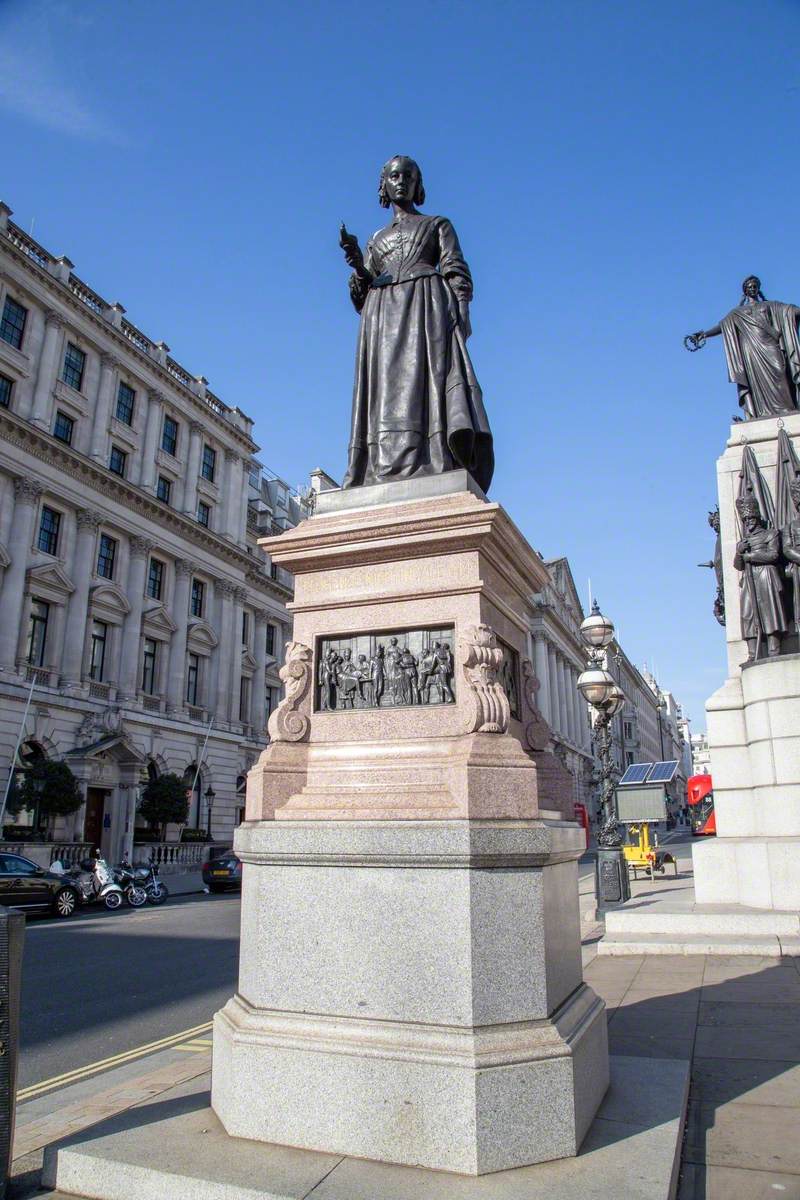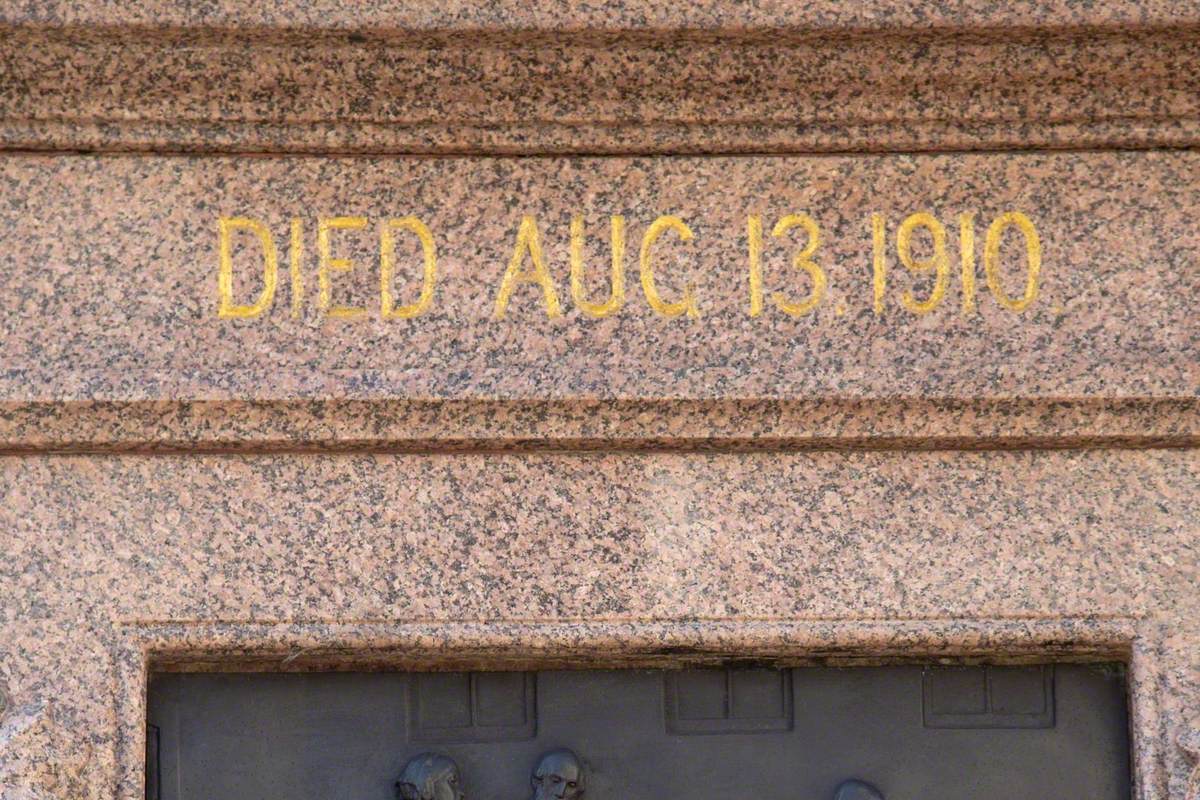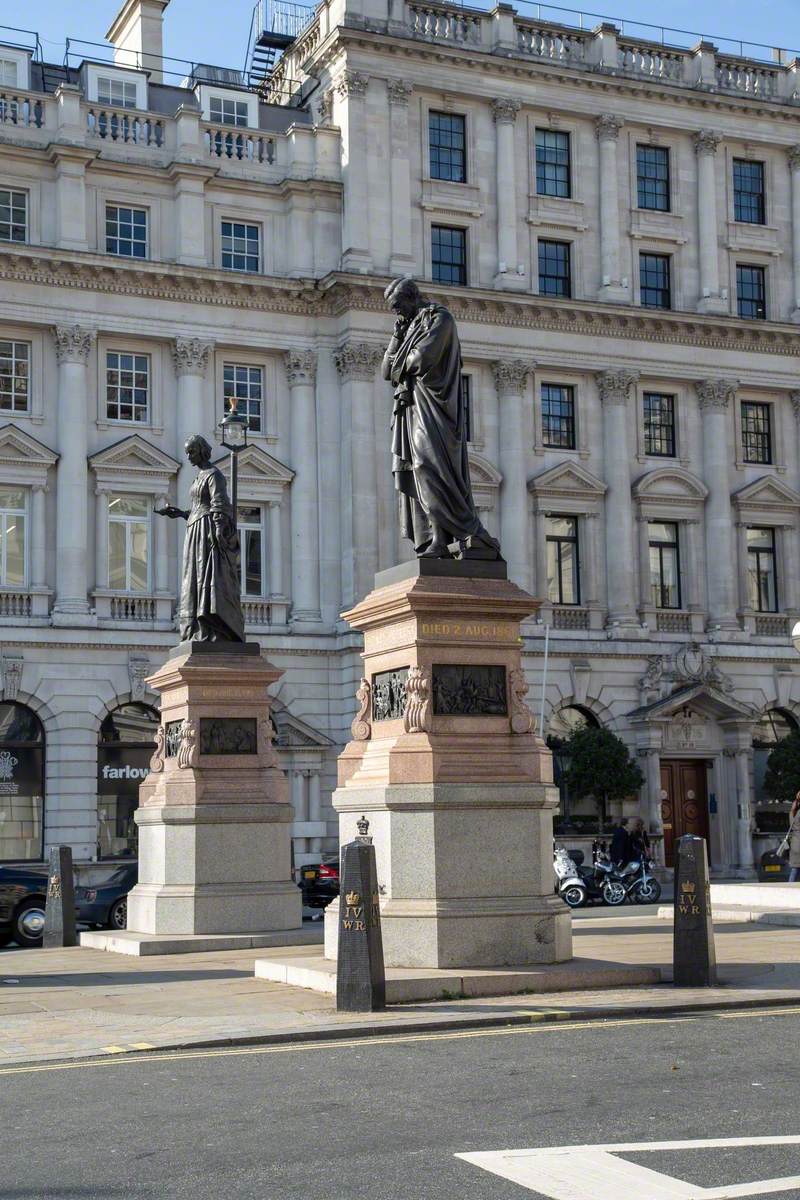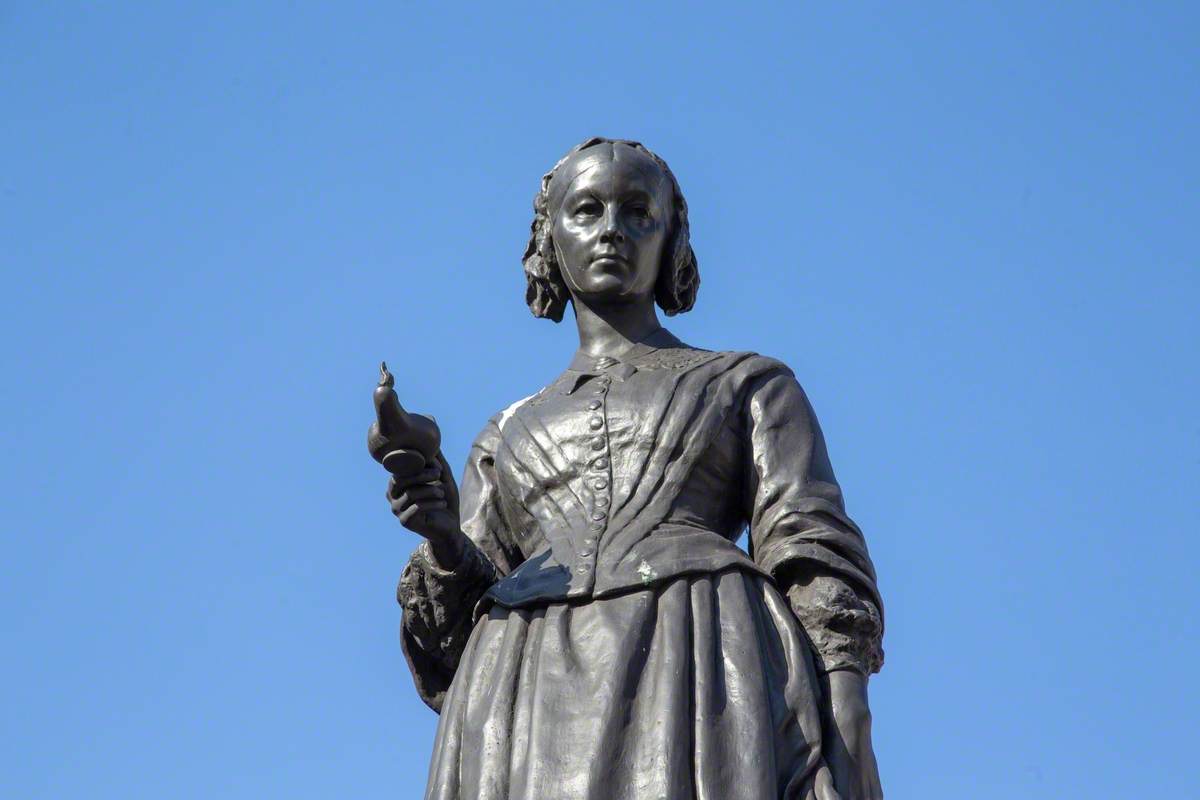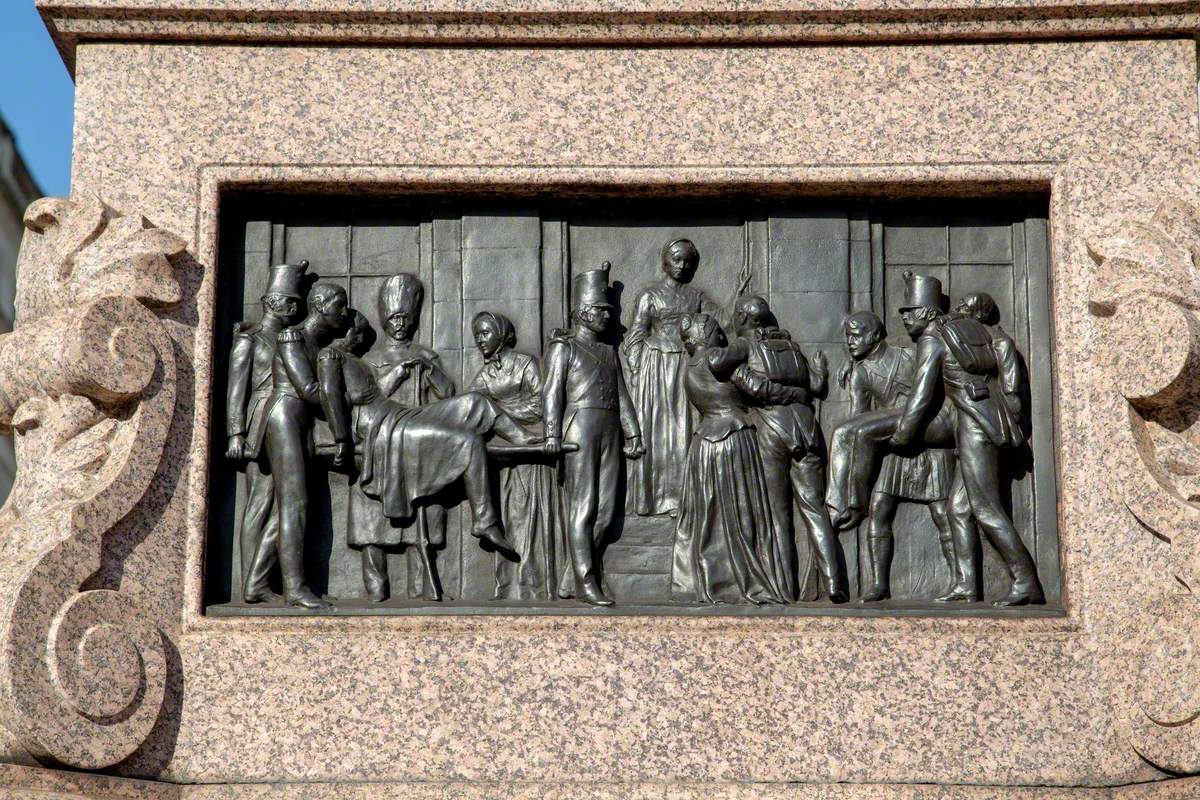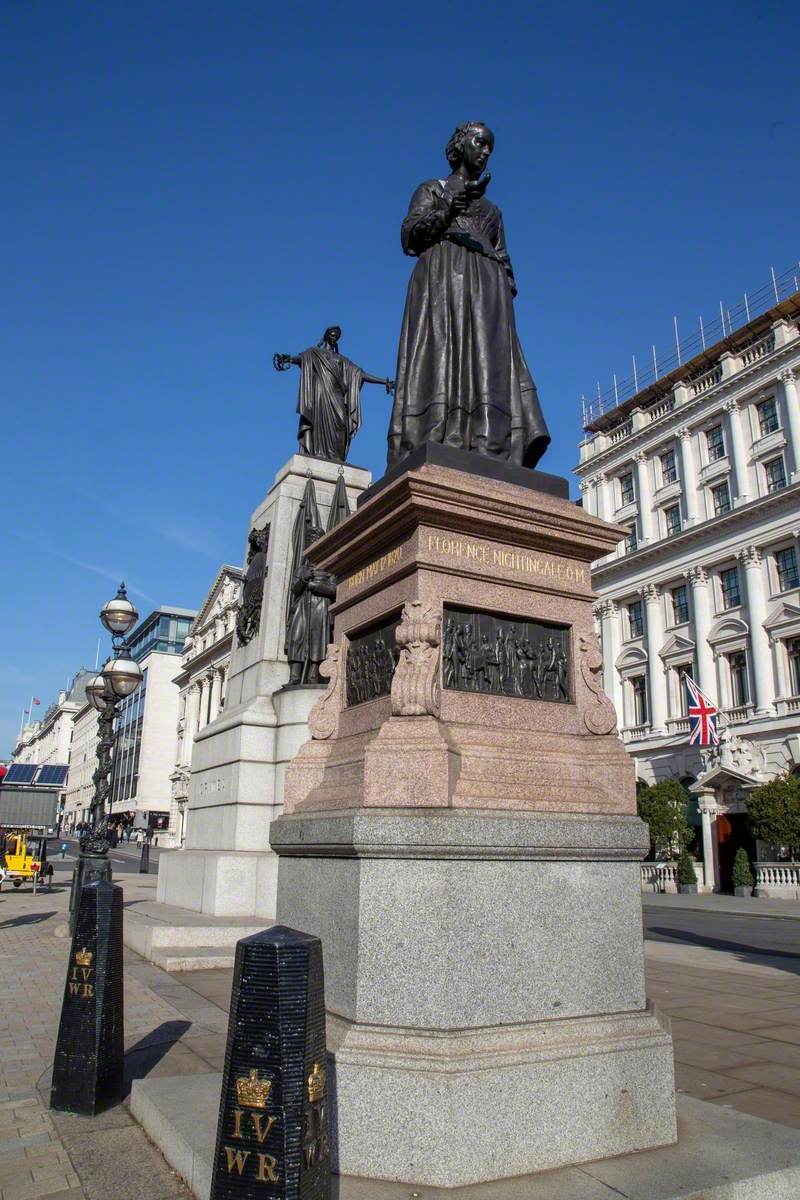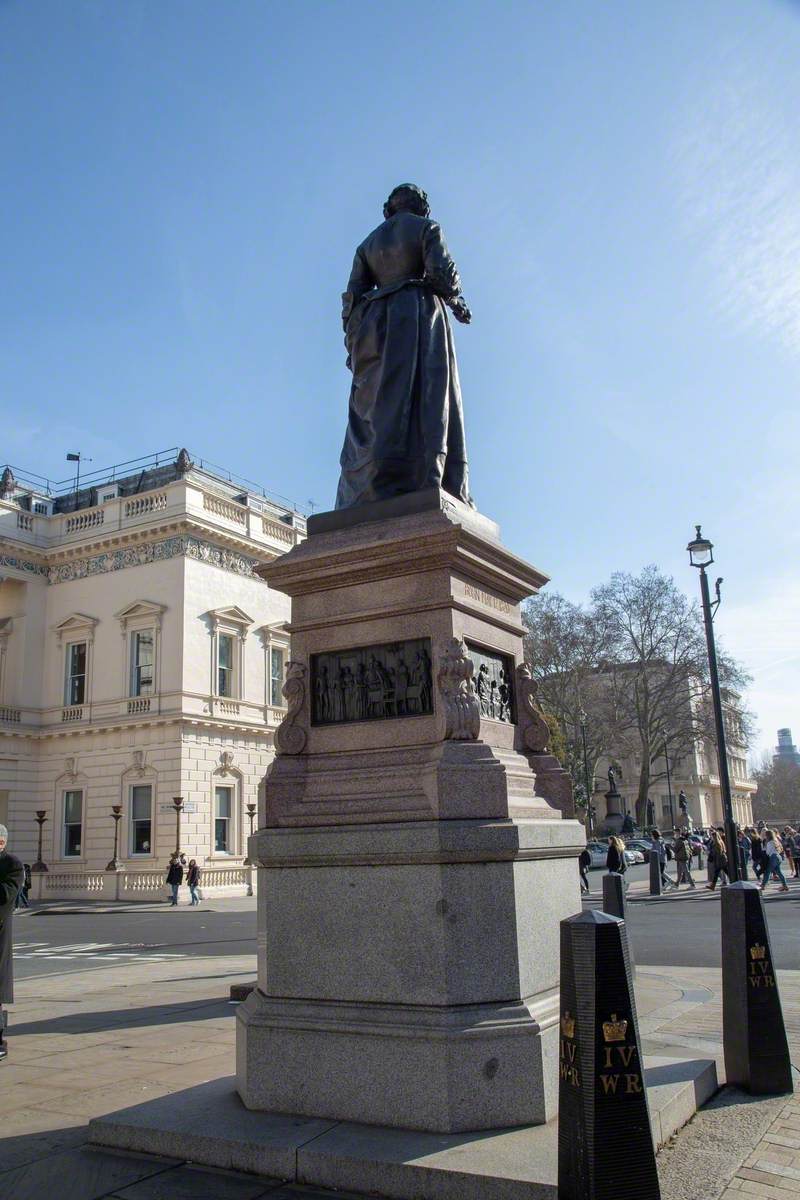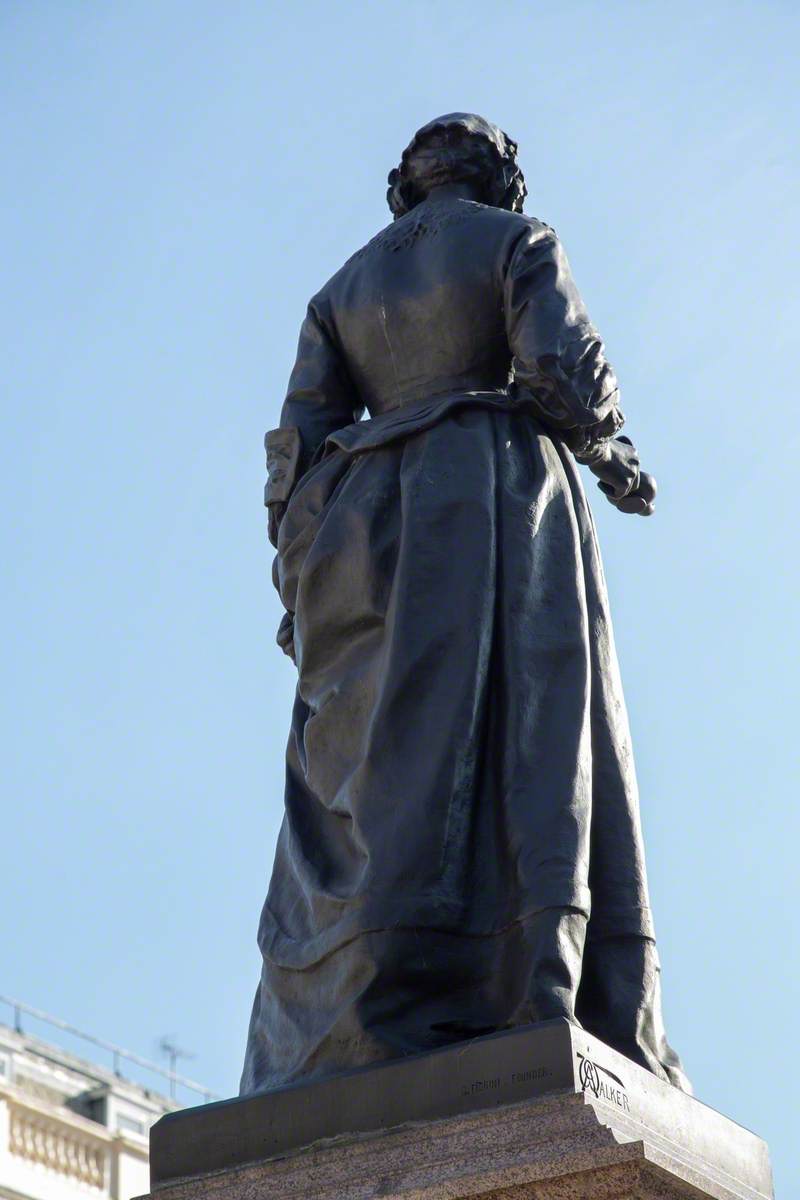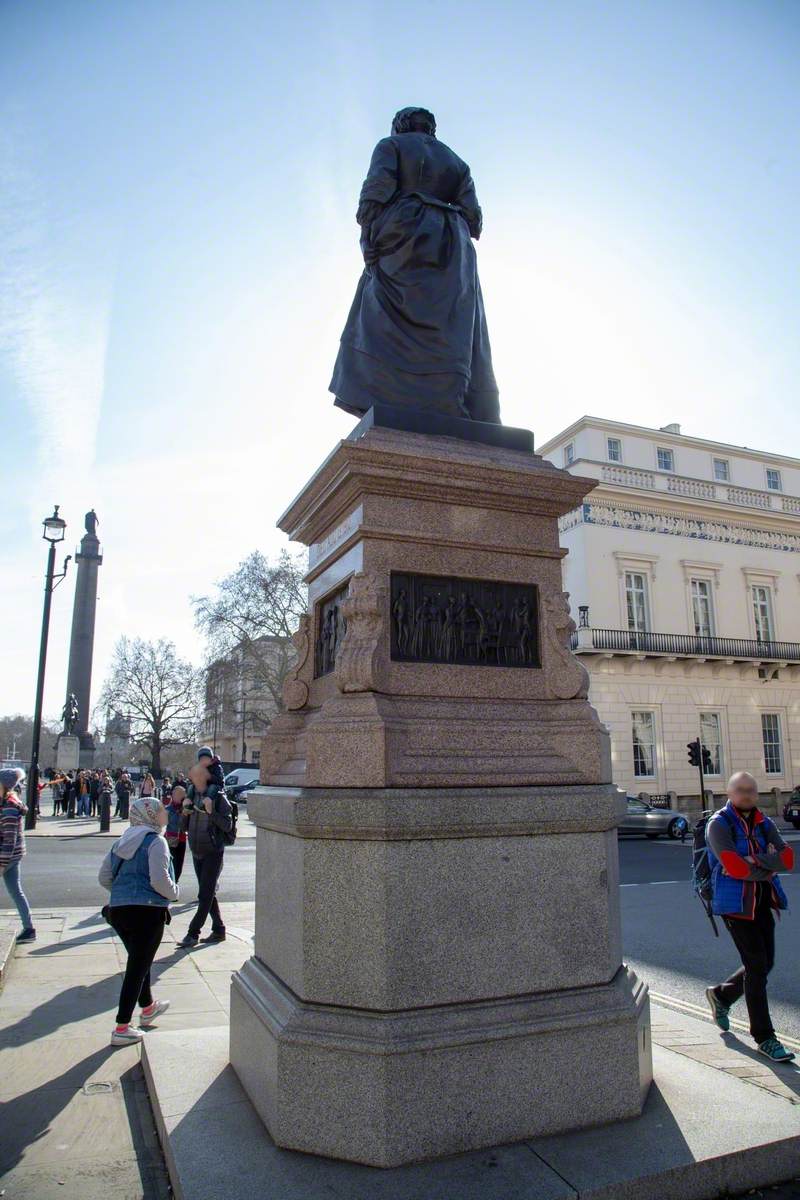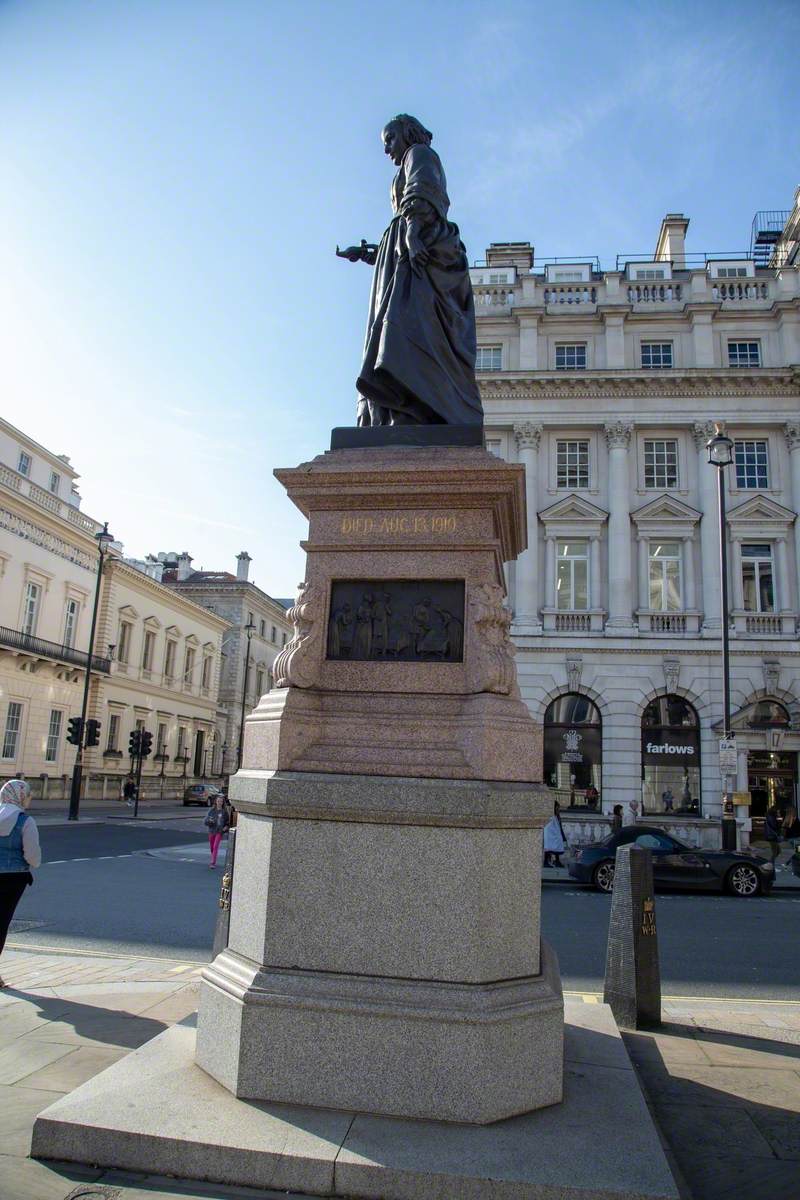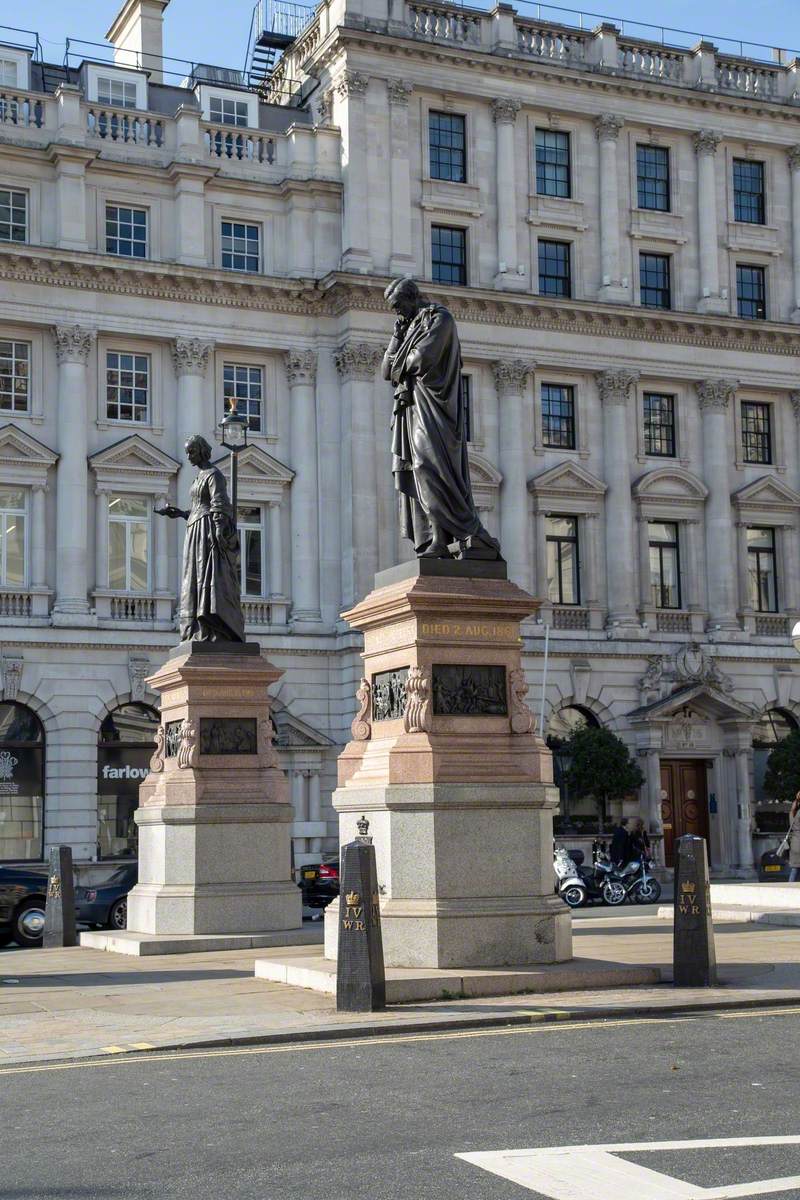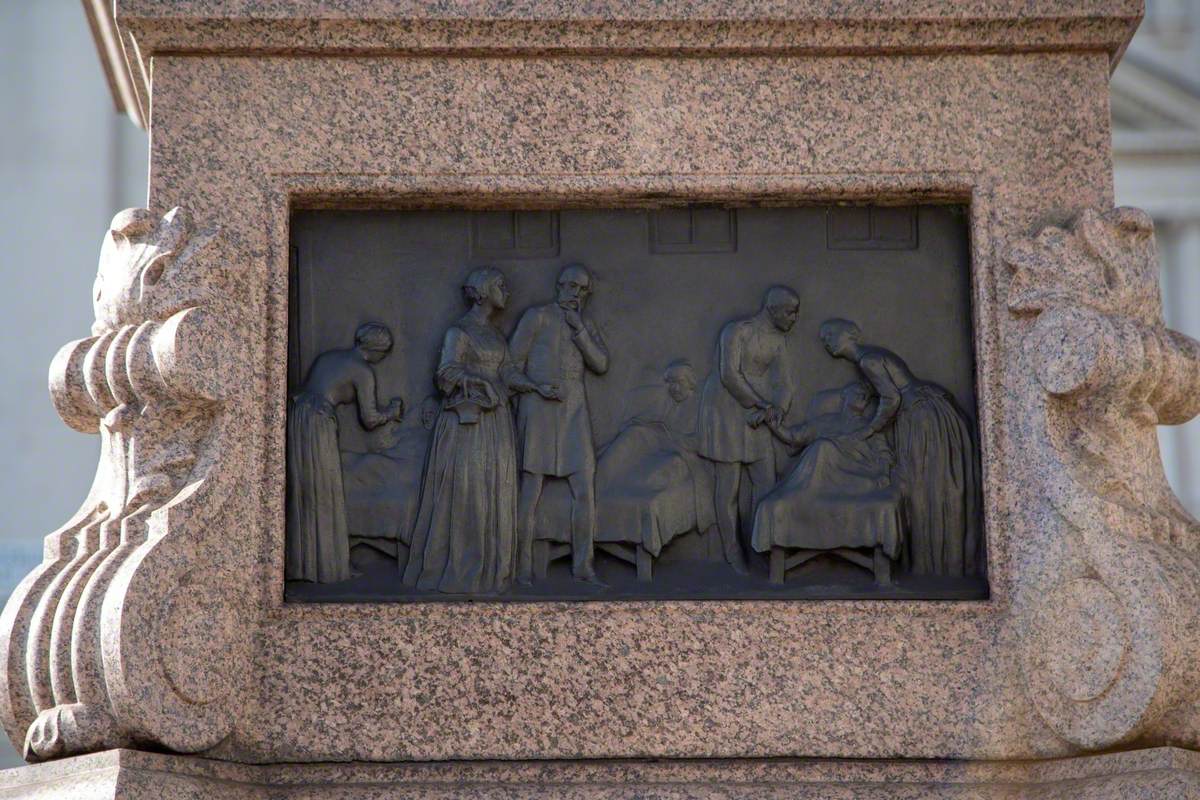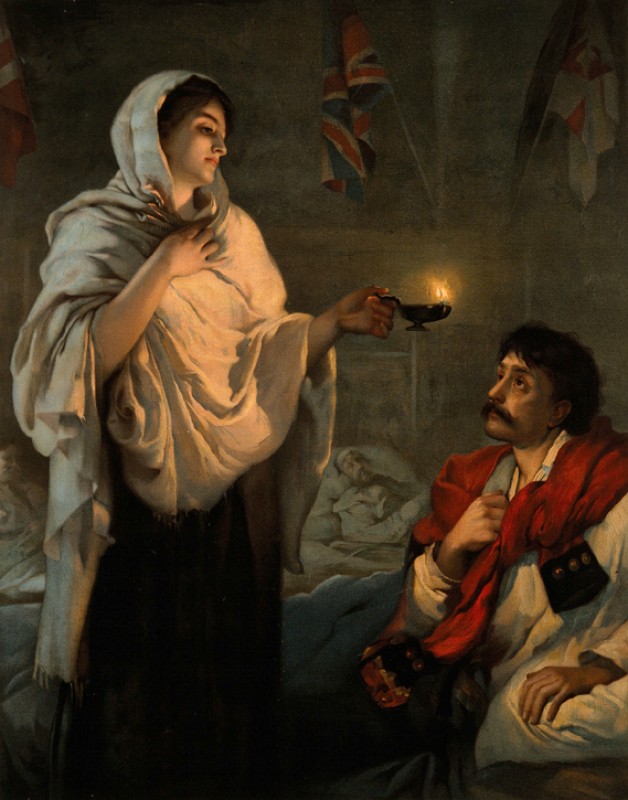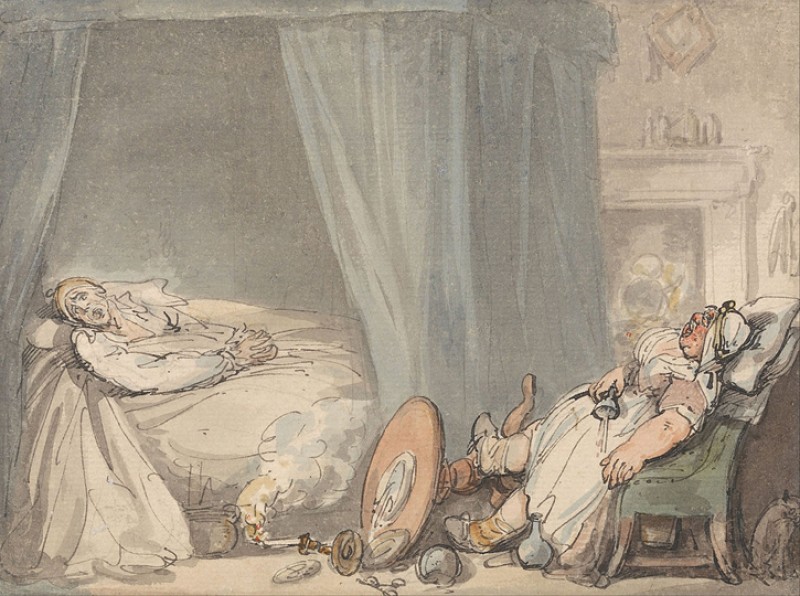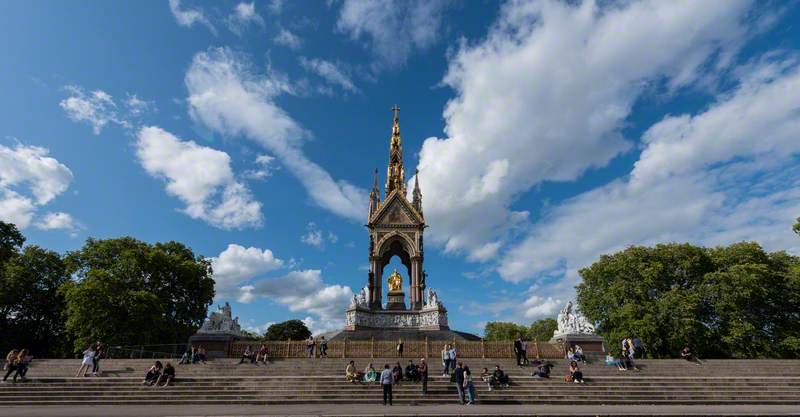How you can use this image
This image is available to be shared and re-used under the terms of the Creative Commons Attribution-NonCommercial licence (CC BY-NC).
This image can be reproduced in any way apart from any commercial uses.
Wherever you reproduce the image or an altered version of it, you must attribute the original creators (acknowledge the original artist(s), the person/organisation that took the photograph of the work) and any other stated rights holders.
Review our guidance pages which explain how you can reuse images, how to credit an image and how to find more images in the public domain or with a Creative Commons licence available.
DownloadNotes
Add or edit a note on this artwork that only you can see. You can find notes again by going to the ‘Notes’ section of your account.
Nightingale is represented as though walking the wards of the Scutari Hospital, with her lamp in her right hand, whilst her left gathers her skirts. Four reliefs decorate the pedestal, beginning chronologically at the back, with a scene at the War Office in 1854. Sidney Herbert rises to greet Florence Nightingale, who is accompanied by two similarly dressed women. Around the table at which Herbert has been sitting are gathered a number of military men. On the right side of the pedestal is a scene in the Hospital at Scutari. Nightingale leads an elderly military gentleman on a tour of the wards. The setting of the scene on the front of the pedestal replicates that on the front of the Sidney Herbert Memorial. Nightingale stands at the top of the steps of the Herbert Hospital at Woolwich, whilst wounded soldiers are brought in.
Title
Florence Nightingale (1820–1910)
Date
1911–1915
Medium
bronze & red granite
Measurements
H 275 x W (?) x D (?) cm;
Plinth: H 325 x W (?) x D (?) cm
Accession number
SW1Y_TJ_S025
Acquisition method
commissioned by the Nightingale Memorial Fund
Work type
Statue
Custodian
English Heritage
Work status
extant
Listing status
Grade II (England and Wales)
Unveiling date
24th February 1915
Listing date
05/02/70
Access
at all times
Signature/marks description
stamped: G.A.Walker
Inscription description
gold lettering to three sides of plinth: FLORENCE NIGHTINGALE O.M. / BORN MAY 12 1820 / DIED AUG 13 1910
